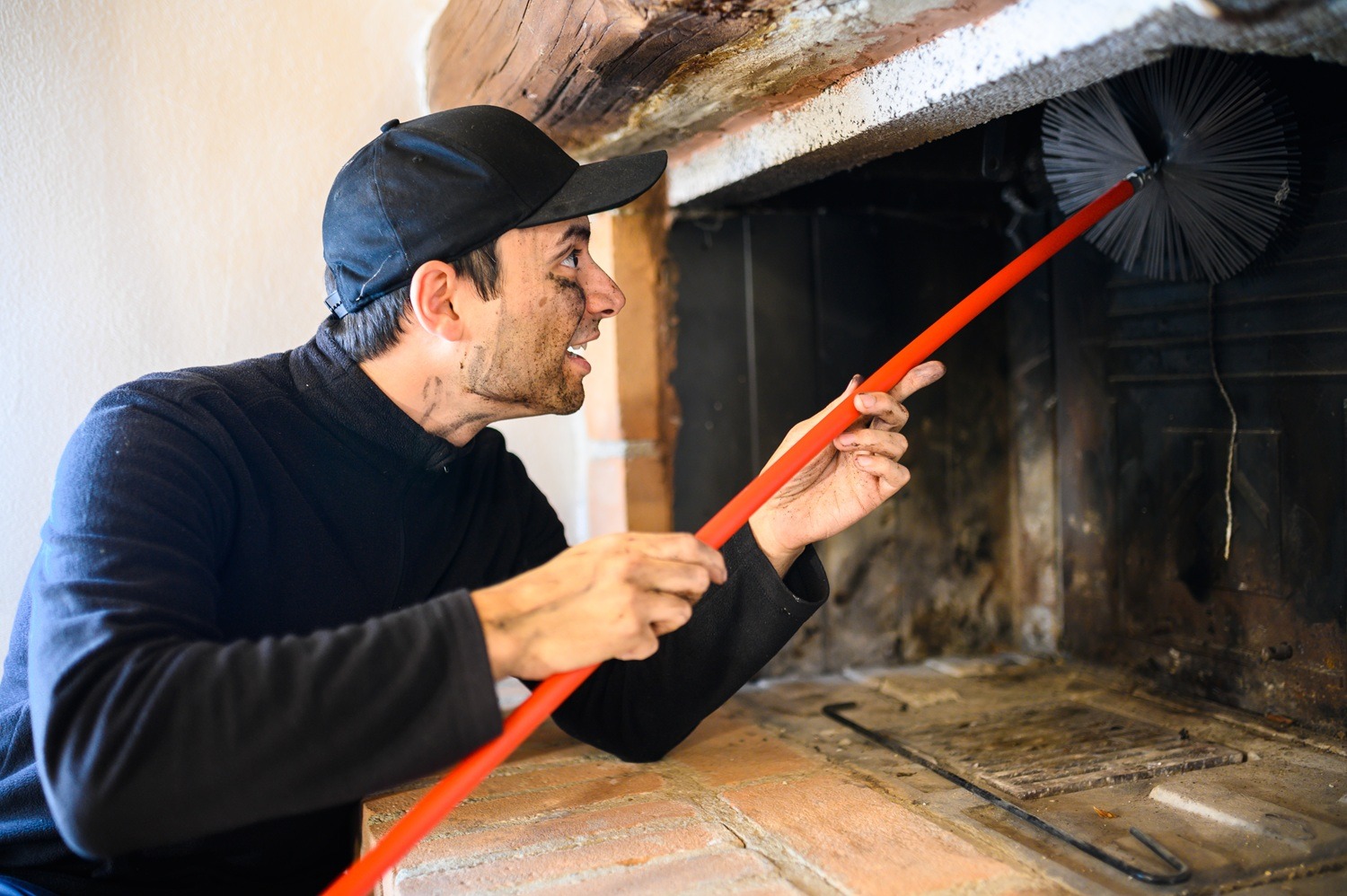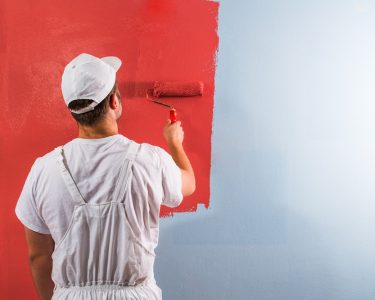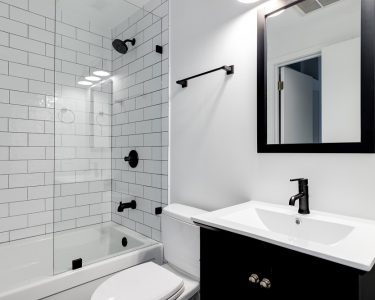In many ways, a fireplace is what makes a home feel like home: they’re warm, cozy, and beautiful, even in hot climates like Los Angeles. That’s why fireplace repair in Los Angeles, CA is so important to keep those qualities sustained.
Many LA residents use their fireplaces for ambiance and occasional warmth. The area may not have long winters, but fireplaces are a quintessential part of interior design.
Unfortunately, fireplaces can develop problems over time that affect performance and safety. Common problems include cracks, clogs, outdated gas lines, and damaged masonry. When these signs appear, fireplace repair becomes necessary.
This guide covers everything you need to know about fireplace repair in Los Angeles. We’ll help you identify common problems and choose the right professional for the job. If you need some more inspiration, check out our post on questions to ask during a chimney inspection.
Signs Your Fireplace Needs Repair
Sometimes fireplace problems are obvious. For example, the unit won’t light or smoke fills the room. Other signs are more subtle and devious; they can lead to bigger issues if ignored.
Here are key warning signs that mean it’s time for a professional inspection:
Structural Issues
- Cracked or crumbling bricks or mortar in masonry fireplaces create serious problems. These gaps weaken the structure and let heat escape into the surrounding walls, building fire hazards over time. It can also cause the chimney to shift or collapse.
- Stains or moisture around the fireplace or chimney signal water damage. Water can damage masonry, rust metal parts, and cause mold growth. Staining on walls may mean the chimney crown or flashing is leaking.
Smell and Sound Problems
- Strong odors of gas, soot, or creosote when the fireplace isn’t in use are concerning. These smells often signal gas leaks or poor ventilation. They can also indicate buildup of dangerous residue. All these conditions increase fire risk and carbon monoxide exposure.
- Whistling or hissing noises from gas units aren’t normal. These sounds can mean loose connections, valve problems, or failing parts. So check these issues quickly to prevent gas leaks or combustion problems.
Performance Issues
- Difficulty lighting or keeping a fire going points to several possible problems. These include flue issues, gas ignition problems, or poor airflow. A fireplace that won’t stay lit usually has something interfering with its normal operation.
- Smoke leaking into the home despite open dampers is dangerous. Backdrafts result from blocked chimneys, poor ventilation, or air pressure problems. Indoor smoke is harmful to breathe. It also means the fireplace isn’t exhausting properly.
Los Angeles has a dry climate that may seem mild. But, that climate’s quirks like wind, dust, and earthquakes still damage fireplace components. Many homes also have older systems installed decades ago that current safety standards may have evolved past.
Fixing small problems early helps preserve your fireplace’s condition. It also improves safety and prevents expensive repairs later.
Common Fireplace Problems in Los Angeles
Los Angeles homeowners face unique challenges with fireplace maintenance. The region’s climate, geology, and home styles all affect how fireplaces age. Here are the most common issues in LA homes:
Earthquake-Related Damage
Even small earthquakes can crack fireboxes or shift flue tiles. They can also move prefabricated units out of place. Over time, these shifts damage structural integrity and safety. Post-earthquake inspections are especially important in older homes.
Environmental Factors
Homes near the coast in places like Malibu and Marina del Ray face salt air exposure. Salt corrodes metal parts like caps, dampers, and venting pipes. Additionally, strong seasonal winds blow debris into chimneys. That debris can block airflow and cause drafts.
Gas System Problems
Many LA homes have older gas fireplaces with worn gas lines. Corrosion, clogs, and leaks develop over time. This happens especially when units aren’t serviced regularly or were retrofitted improperly.
Chimney Issues
Chimneys with subpar cleaning or lining collect debris. Soot or even small animals can also get in. This creates fire hazards and poor ventilation. Furthermore, using the fireplace during the cooler months adds fuel to the fire.
Previous Owner Modifications
DIY fixes or outdated upgrades made without permits create long-term problems. In Los Angeles, many homes have changed ownership many times. As a result, it’s common to find improperly sealed gas lines, mismatched venting, or code violations.
Older homes with DIY retrofits may also contain hidden hazards. In some cases, lead dust sampling is essential before any demolition or renovation work takes place near the fireplace or chimney.
Ventilation Problems
Some fireplaces struggle with proper draft due to chimney height or surrounding buildings. Tight indoor air conditions can also cause issues. This results in smoke spillage, soot buildup, and poor efficiency.
These problems often go unnoticed until homeowners try to use the fireplace. They may also surface during renovations. Fireplace inspection should always be in your bag of tricks if you’re planning a remodel or to buy an older home.
Types of Fireplaces and Their Repair Needs
Understanding your fireplace type is essential for diagnosing problems. Los Angeles homes range from historic to modern styles. Each fireplace type has specific maintenance needs.
Masonry Fireplaces
Traditional fireplaces built from brick or stone include built-in chimneys. They’re common in older LA homes and admired for their craftsmanship. Over time, they may develop several issues.
Common problems include cracked mortar joints or loose bricks that weaken the structure. Damaged or missing chimney caps allow water and debris to enter. Flue liner issues, such as cracking from age or earthquakes, also occur frequently.
Since masonry fireplaces are built into the home’s structure, repairs need specialized materials. Careful restoration work preserves looks and function.
Many of these fireplaces are found in historic homes, where preservation work must be handled with care. A general contractor experienced with historic properties can help ensure that structural and aesthetic integrity is maintained during repairs.
Gas Fireplaces
Many newer LA homes feature gas fireplaces for convenience and cleaner operation. Natural gas powers these units, and they’re controlled by switches, remotes, or wall panels.
Common repair needs include replacing faulty ignition systems. Thermocouples that prevent flames from staying lit also need replacement. Repairing or sealing gas line leaks is important, especially in retrofitted systems.
Cleaning or realigning ceramic logs, burners, and glass doors maintains safety and appearance. Gas units are generally easier to maintain than wood-burning models. But, they still need regular service for proper airflow and gas delivery.
Prefabricated or Zero-Clearance Fireplaces
Factory-built units are popular in condos and contemporary homes. They install into walls with insulation and venting. This allows placement near combustible materials.
Repairs may involve replacing damaged refractory panels inside the firebox. Addressing corrosion in vent pipes or termination caps is also common. Fixing warped or misaligned doors, screens, or trim pieces maintains proper function.
Prefabricated fireplaces are more standardized than masonry units. Yet, they can still fail due to age, poor installation, or lack of maintenance. Replacement parts may need to match the original manufacturer’s model for proper fit.
Understanding your fireplace type helps you make informed decisions. It affects care, repair timing, and who to call for help. A licensed technician will ask about the fireplace’s age, brand, and installation history. This helps determine the best repair approach.
The Fireplace Repair Process
Many Los Angeles homeowners aren’t familiar with scheduling fireplace repairs. This is especially true if you’ve moved into an older home or haven’t used the fireplace recently. Understanding the general steps helps you feel more confident and prepared.
1. Initial Inspection
The repair process starts with a visual and functional fireplace and chimney inspection. A certified technician examines the firebox, damper, flue, and vent pipes. They also check gas connections and exterior components like the chimney or cap.
For gas fireplaces, they test the pilot light and ignition system. They also check carbon monoxide levels. Inspections may involve camera scoping inside the flue to check for hidden cracks, soot buildup, or animal nests.
This step identifies the root cause of performance issues or safety hazards.
2. Diagnosis and Repair Plan
After the inspection, the technician explains their findings. They offer a repair plan with recommended fixes and safety concerns, including an estimated timeline for the work.
If permits are required, the technician can help with applications. This is especially important for gas line modifications or structural changes. Los Angeles fireplace repair professionals know local building codes and safety regulations.
Ensuring compliance is a priority, especially in older homes. Original installations may not meet current standards.
3. Performing the Repairs
The actual repair work varies by fireplace type and issue severity. Common tasks include repointing mortar joints in masonry fireplaces. Replacing damaged flue liners or chimney caps is also common.
Other repairs include fixing or resealing gas line connections. Replacing faulty ignition components in gas units happens frequently. Cleaning or reinstalling blocked vent systems is also routine work.
Most minor repairs finish in a single visit. But, larger jobs may need follow-ups. This is especially true if parts need ordering or weather delays outdoor work.
4. Post-Repair Testing
Before finishing the job, the technician makes sure the fireplace operates safely. This includes checking gas flow, ventilation, ignition systems and smoke clearance.
The technician may explain new safety features or maintenance tips to protect you from future issues.
5. Clean-Up and Documentation
Good repair services include thorough clean-up of dust, debris, and removed materials. You should receive a copy of the inspection report and a summary of completed work.
This documentation helps with insurance, home sales, or warranty records.
Knowing what to expect during fireplace repair ensure smoother sailing on the journey. It also helps you plan ahead for colder months or restoring a non-working fireplace.
Costs of Fireplace Repair in LA
Fireplace repair costs in Los Angeles vary widely, with several key factors influencing pricing. Online price estimates only paint part of the picture. Look past the smoke-and-mirrors by understanding what affects the costs. Include your home’s unique situation as well.
Factors That Affect Repair Costs
- Type of Fireplace Masonry fireplaces often cost more to repair than gas or prefabricated models. For instance, brickwork restoration or chimney rebuilding involves more labor and materials. In contrast, replacing a gas valve or thermocouple is simpler.
- Extent of the Damage Small cracks or clogged vents may only need a short visit with basic tools. But, extensive water damage, flue collapse, or long-term neglect requires complex repairs. These take many visits and specialized equipment.
- Accessibility Some chimneys and fireplaces are hard to reach due to roof height or steep pitch. Built-in framing can also create challenges. Homes on hillsides or with tight attic spaces need more time and safety precautions. This can increase costs.
- Permit Requirements In Los Angeles, certain repairs need permits. This is especially true for gas line work or structural changes. Factor the permit cost and time to get it into your budget.
- Part Availability Older or discontinued fireplace models may need hard-to-find parts. In these cases, custom fabrication or retrofitting may be necessary. This increases both cost and lead time.
Tips for Budgeting
- Schedule Routine Inspections: Catching small issues early is often more affordable. Don’t wait until damage becomes extensive.
- Bundle Repairs with Seasonal Maintenance: If you’re already scheduling a chimney sweep or inspection, combine minor repairs. This may help reduce labor charges.
- Request a Detailed Estimate: A reputable technician provides a breakdown of labor, materials, and extra fees.
- Check Insurance and Warranties: Homeowners insurance or home warranty plans may cover certain damage. Check your policy terms before committing to repairs.
- Ask About Off-Season Availability: Some companies offer better scheduling and potential savings during spring and summer. This is when demand is lower.
Of course, cost is the frontrunner when budgeting for fireplace repair in LA. But it needs to be balanced with keeping your fireplace a safe, functional part of your home.
Understanding pricing factors helps you plan smarter and avoid surprises.
Choosing the Right Fireplace Repair Professional in LA
Los Angeles fireplace repairs need technical skill and local knowledge. Use these criteria to find a reliable, qualified technician:
Verify Licensing and Certifications
Choose a contractor licensed through the California Contractors State License Board (CSLB). For gas-related work, look for NFI certification. This shows the technician is trained in fuel-specific systems and safety.
Focus on Local Experience
Los Angeles homes vary widely in age and design. A local expert understands how to handle earthquake damage and hillside access. They also know building code requirements specific to the region.
Check Reviews and Ask for References
Read online reviews across platforms like Yelp and Google. Look for feedback on punctuality, professionalism, and quality. For larger jobs, ask for references or photos of recent work.
Confirm Knowledge of Permit Requirements
Your repair may involve gas lines, chimney rebuilding, or structural changes. These often need city permits. A good technician handles these properly and ensures all work meets code.
Be Cautious of High-Pressure Tactics
A trustworthy professional explains issues clearly and gives you options. Avoid contractors who rush decisions or refuse written estimates. Also avoid those who recommend major repairs without inspection.
Coordinating with experienced specialists, from fireplace techs to local electrical supply partners, ensures that all systems are installed and maintained properly.
Hiring someone with the right qualifications gives you peace of mind. Your fireplace will be repaired safely, legally, and to high standards. As with any major home system, hiring a professional contractor offers long-term peace of mind, especially when safety and compliance are on the line.
When to Repair vs. When to Replace
Deciding between repairing and replacing your fireplace depends on several factors. Many issues can be resolved with professional repair. But, there are situations where replacement is more practical.
Repair Your Fireplace If:
- The damage is minor and isolated. Small cracks, clogged vents, or worn components can often be fixed. These repairs don’t need you to alter the structure or replace the unit.
- Your fireplace is relatively modern. Units installed within the last 10–15 years may still be serviceable. They’re also compatible with available parts.
- You’re happy with its current style and function. If you’re not planning a remodel and your fireplace meets your needs, targeted repairs are enough.
- The fireplace passes safety inspection after minor fixes. If a licensed technician clears it for use after addressing specific issues, replacement may not be necessary.
Replace Your Fireplace If:
- Structural damage is extensive. Crumbling fireboxes, shifting chimneys, or flue failure signal serious problems. The system is no longer safe or cost-effective to repair.
- The unit is outdated or inefficient. Older fireplaces may not meet today’s energy or emissions standards. They could be more costly to operate long-term.
- Parts are discontinued or hard to find. If replacement components are no longer available or must be custom-made, installing a new unit is faster and more reliable.
- You’re remodeling or upgrading the space. A new fireplace can better match updated interiors. It also offers improved features like remote operation or cleaner fuel systems.
Often, a professional inspection helps you decide which route makes sense. Repairs are ideal for preserving original character or function. Replacement works better when safety, efficiency, or looks are top priorities.
Fireplace Repair in LA: What to Do Next
A well-maintained fireplace adds comfort, charm, and value to your Los Angeles home. Whether you use it daily during winter or just for ambiance, keeping it in good condition protects your property and those who live on it.
Now you know what signs to watch for and how the repair process works. You also understand when replacement might make sense. The next step is scheduling a professional inspection.
If you want to prepare your home for cooler months, fireplace servicing pairs well with interior improvement projects that get your home winter-ready.
A certified fireplace technician can assess your system and identify issues. They’ll help you decide on the right repairs based on your fireplace type and home’s age.
If you’re planning a remodel or upgrading a gas unit, act now. If you just want peace of mind before the next cool season, don’t wait. Acting now helps you avoid delays and unnecessary costs.





